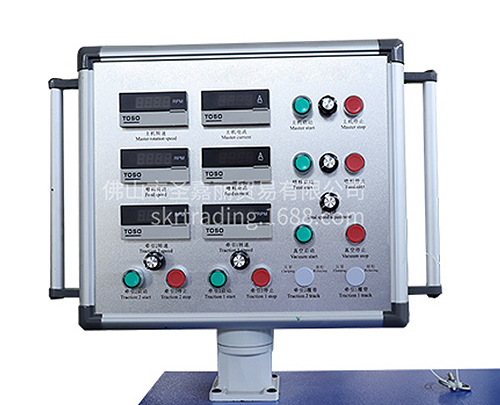Box making machines, also known as carton making machines, are essential equipment in the packaging industry. They are used to automate the process of making boxes and cartons, which increases productivity, reduces labor costs, and ensures uniformity in the quality of the boxes. In this article, we will explore the workflow of box making machines and their production capabilities.
Workflow
The workflow of a box making machine consists of several steps, including feeding, printing, slotting, and folding. Here is a brief description of each step:
Feeding: The process starts with feeding cardboard sheets into the machine. The cardboard sheets are usually pre-printed with designs and markings that guide the machine’s operation.
Printing: The machine can print designs, logos, and other graphics on the cardboard sheets. This step is optional, as the cardboard sheets may already be pre-printed.
Slotting: The machine then cuts slots on the cardboard sheets to create flaps and tabs that will be folded later. The slots are cut with precision, ensuring that the flaps and tabs fit perfectly.
Folding: The final step is folding the cardboard sheets into boxes or cartons. The machine uses various techniques to fold the cardboard sheets, such as creasing, scoring, and folding. The folded boxes are then ejected from the machine, ready for use.

Production capabilities
The production capabilities of box making machines vary depending on the model and manufacturer. Here are some factors that affect a machine’s production capacity:
Speed: The speed of a
Box making machines, also known as carton making machines, are essential equipment in the packaging industry. They are used to automate the process of making boxes and cartons, which increases productivity, reduces labor costs, and ensures uniformity in the quality of the boxes. In this article, we will explore the workflow of box making machines and their production capabilities.
Workflow
The workflow of a box making machine consists of several steps, including feeding, printing, slotting, and folding. Here is a brief description of each step:
Feeding: The process starts with feeding cardboard sheets into the machine. The cardboard sheets are usually pre-printed with designs and markings that guide the machine’s operation.
Printing: The machine can print designs, logos, and other graphics on the cardboard sheets. This step is optional, as the cardboard sheets may already be pre-printed.
Slotting: The machine then cuts slots on the cardboard sheets to create flaps and tabs that will be folded later. The slots are cut with precision, ensuring that the flaps and tabs fit perfectly.
Folding: The final step is folding the cardboard sheets into boxes or cartons. The machine uses various techniques to fold the cardboard sheets, such as creasing, scoring, and folding. The folded boxes are then ejected from the machine, ready for use.
Production capabilities
The production capabilities of box making machines vary depending on the model and manufacturer. Here are some factors that affect a machine’s production capacity:
Speed: The speed of a box making machine determines how many boxes it can produce in a given time. The speed is measured in units per hour or minute. High-speed machines can produce up to 200 boxes per minute, while low-speed machines can produce around 50 boxes per minute.
Size: The size of the machine determines the maximum size of the boxes it can produce. Most machines can produce boxes of various sizes, but there are limits to the smallest and largest sizes.
Material: Box making machines can work with various materials, such as corrugated cardboard, paperboard, and chipboard. The thickness and quality of the material affect the machine’s production capacity.
Automation: Fully automated machines can produce more boxes than semi-automated machines. Automation reduces the need for manual labor and increases the machine’s efficiency.
Maintenance: Regular maintenance and cleaning of the machine can improve its production capacity. Neglected machines are prone to breakdowns, which can result in production downtime.
Conclusion
Box making machines have revolutionized the packaging industry by automating the process of making boxes and cartons. The workflow of box making machines involves feeding, printing, slotting, and folding. The production capabilities of the machine depend on factors such as speed, size, material, automation, and maintenance. When choosing a box making machine, it is essential to consider these factors to ensure that the machine meets your production needs.
determines how many boxes it can produce in a given time. The speed is measured in units per hour or minute. High-speed machines can produce up to 200 boxes per minute, while low-speed machines can produce around 50 boxes per minute.
Size: The size of the machine determines the maximum size of the boxes it can produce. Most machines can produce boxes of various sizes, but there are limits to the smallest and largest sizes.
Material: Box making machines can work with various materials, such as corrugated cardboard, paperboard, and chipboard. The thickness and quality of the material affect the machine’s production capacity.
Automation: Fully automated machines can produce more boxes than semi-automated machines. Automation reduces the need for manual labor and increases the machine’s efficiency.
Maintenance: Regular maintenance and cleaning of the machine can improve its production capacity. Neglected machines are prone to breakdowns, which can result in production downtime.
Conclusion
Box making machines have revolutionized the packaging industry by automating the process of making boxes and cartons. The workflow of box making machines involves feeding, printing, slotting, and folding. The production capabilities of the machine depend on factors such as speed, size, material, automation, and maintenance. When choosing a box making machine, it is essential to consider these factors to ensure that the machine meets your production needs.